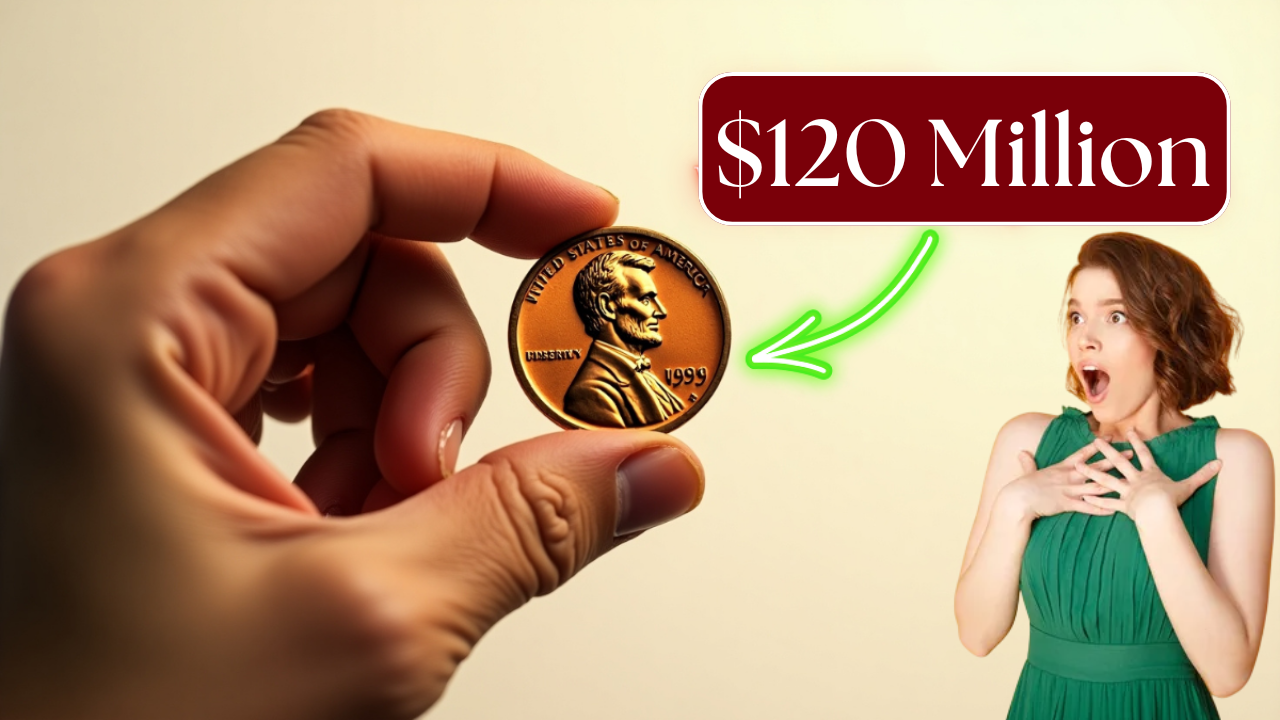Introduction
The story of the Lincoln Wheat Penny, particularly one allegedly valued at an astronomical $120 million, is one that captivates numismatists, historians, and everyday collectors alike. Could a humble one-cent coin — still possibly lingering in circulation — truly hold such immense value? Or is it a fascinating mix of history, myth, rarity, and market speculation that inflates its worth?
In this comprehensive 7,000-word article, we explore the origin, historical significance, numismatic evolution, and market dynamics that have shaped the Lincoln Wheat Penny’s legacy — with a sharp focus on the coin(s) tied to this $120 million valuation. We also examine the likelihood of these treasures still being in circulation, discuss authentic examples that have commanded similar prices, and assess how collectors and the general public can potentially identify valuable coins.
The Birth of the Lincoln Wheat Penny
First minted in 1909 to commemorate the 100th anniversary of Abraham Lincoln’s birth, the Lincoln Wheat Penny (or Lincoln Cent) was a milestone in U.S. coinage history. It was the first American coin to feature a real person — the 16th President of the United States — on its face.
Key Facts:
- Designer: Victor David Brenner
- First year of issue: 1909
- Composition: 95% copper, 5% tin and zinc
- Reverse design: Wheat ears (hence the name)
The wheat ears symbolized prosperity and productivity, and this iconic design remained until 1958, when it was replaced by the Lincoln Memorial reverse.

What Makes a Coin Worth Millions?
Understanding why a coin like the Lincoln Wheat Penny might fetch up to $120 million requires unpacking a few critical variables:
- Rarity: Coins with limited mintage or surviving examples are inherently more valuable.
- Historical Significance: Coins that mark key moments in history (errors, first/last issues, political events) are prized.
- Condition (Grading): Coins graded MS-67 or higher can command far greater prices.
- Mint Errors: Double strikes, off-centers, and rare planchet errors boost value.
- Material Composition: Some pennies were accidentally struck in bronze instead of steel during war years.
Let’s delve into the most coveted Lincoln Wheat Pennies, including the one allegedly worth $120 million.
The $120 Million Lincoln Penny: Fact or Fiction?
The coin often associated with the $120 million price tag is the 1943 Bronze Lincoln Wheat Penny. While the standard 1943 cent was made from zinc-coated steel due to copper shortages during World War II, a few were mistakenly struck in bronze.
1943 Bronze Penny Breakdown:
- Material: Bronze (95% copper)
- Estimated mintage: ~20 (across all mints)
- Current known examples: Around 12-15
- Top verified sale: Over $1.7 million (Heritage Auctions, 2010s)
So where does the $120 million claim come from? It’s likely speculative hype or an unverified private offer. Some collectors might place theoretical values on coins due to insurance, uniqueness, or unmatched condition, but no public auction has reached this amount.
Other Valuable Lincoln Wheat Pennies
| Year | Mint Mark | Type | Estimated Value (Top Grade) | Key Reason |
|---|---|---|---|---|
| 1909 | S VDB | Wheat | $100,000+ | First year, rare initials |
| 1914 | D | Wheat | $60,000+ | Scarce mintage |
| 1922 | No D | Wheat | $40,000+ | Minting error |
| 1943 | Bronze | Wheat | $1.7 million – $10 million (private sales rumored higher) | Wrong metal |
| 1955 | Doubled Die | Wheat | $50,000+ | Famous minting error |
These rare coins may not be valued in the hundreds of millions, but they have been publicly bought and sold for immense sums.

How To Identify a Potential $120 Million Penny
Many enthusiasts wonder: What if I have one of these rare coins in my change jar? Here are some things to look out for:
- Magnet Test: A 1943 penny should be attracted to a magnet. If not, you may have a bronze version.
- Weight: Use a precise digital scale. Bronze pennies weigh about 3.11 grams.
- Mint Mark: Check for S (San Francisco) or D (Denver) mints on older pennies.
- Visual Errors: Look for double dies, misalignments, or off-metal strikes.
Before celebrating, have the coin authenticated by professional services like PCGS or NGC.
Could Valuable Pennies Still Be in Circulation?
The chances are extremely slim, but not impossible. Coins often get passed down in estates, show up in old collections, or get accidentally released back into circulation. In fact, several high-value pennies have been discovered by everyday citizens checking their pocket change.
While banks and retailers rarely see such coins due to automated coin-sorting systems, the average person might still strike gold if they’re observant and informed.
Modern Numismatic Market and Trends
Over the past decade, rare coin collecting has surged, with digital platforms and televised auctions making the market more visible and accessible.
Market Trends:
- Increased Interest: TV shows and social media have reignited interest.
- Investment Potential: Coins are increasingly seen as tangible investments.
- Auction Dynamics: Prices spike when coins are part of a larger, story-driven collection.
Certain auction houses like Heritage Auctions, Stack’s Bowers, and GreatCollections regularly feature high-profile Lincoln pennies.
Preservation and Authentication Tips
If you believe you’ve found a rare or valuable penny:
- Don’t clean it. Cleaning can destroy its value.
- Store safely. Use coin flips or holders.
- Get it appraised. Reach out to certified numismatists.
- Grade the coin. PCGS or NGC will provide a definitive grade and encapsulate the coin.
- Stay informed. Read coin magazines, forums, and auction results.
Conclusion Table: Quick Glance at Key Lincoln Pennies
| Year | Mint | Feature | Composition | Approx. Value | Remarks |
| 1909 | S VDB | First Year, VDB initials | Bronze | $100,000+ | Low mintage |
| 1914 | D | Scarce Year | Bronze | $60,000+ | Popular rarity |
| 1922 | No D | Error coin | Bronze | $40,000+ | No mint mark error |
| 1943 | — | Bronze mistake | Bronze | $1.7M – rumored $120M | War error coin |
| 1955 | — | Doubled Die Obverse | Bronze | $50,000+ | Visible doubling |
FAQs
Q1: Is there really a Lincoln Penny worth $120 million?
A1: No verified public sale has reached $120 million, but extremely rare examples like the 1943 bronze penny have sold for over $1.7 million. The $120 million claim is likely speculative.
Q2: How can I tell if I have a valuable Lincoln Penny?
A2: Look for unusual features like misprints, bronze 1943 coins, or coins in pristine mint state. Weigh it and check magnetic properties. Get it authenticated.
Q3: Are these rare pennies still in circulation?
A3: It’s highly unlikely, but not impossible. A few have been found by the public in recent decades, especially among older collections or change jars.
Q4: What’s the rarest Lincoln Wheat Penny?
A4: The 1943 Bronze Penny is among the rarest and most valuable. Fewer than 20 are known to exist.
Q5: What should I do if I find a rare penny?
A5: Avoid cleaning it, store it securely, and seek expert appraisal. Have it graded and consider consulting auction houses for sale options.












